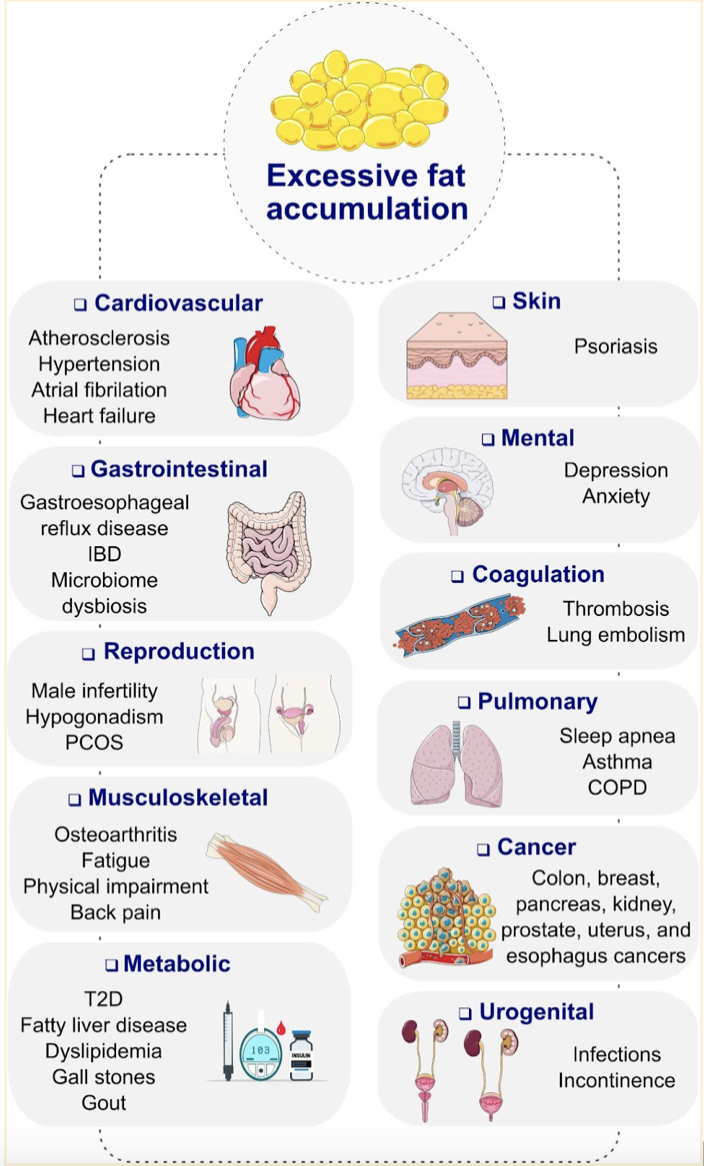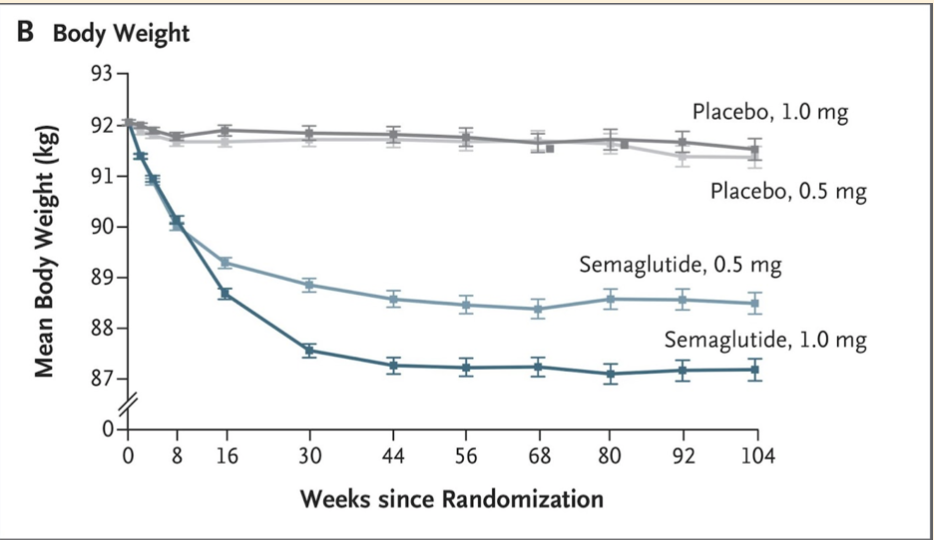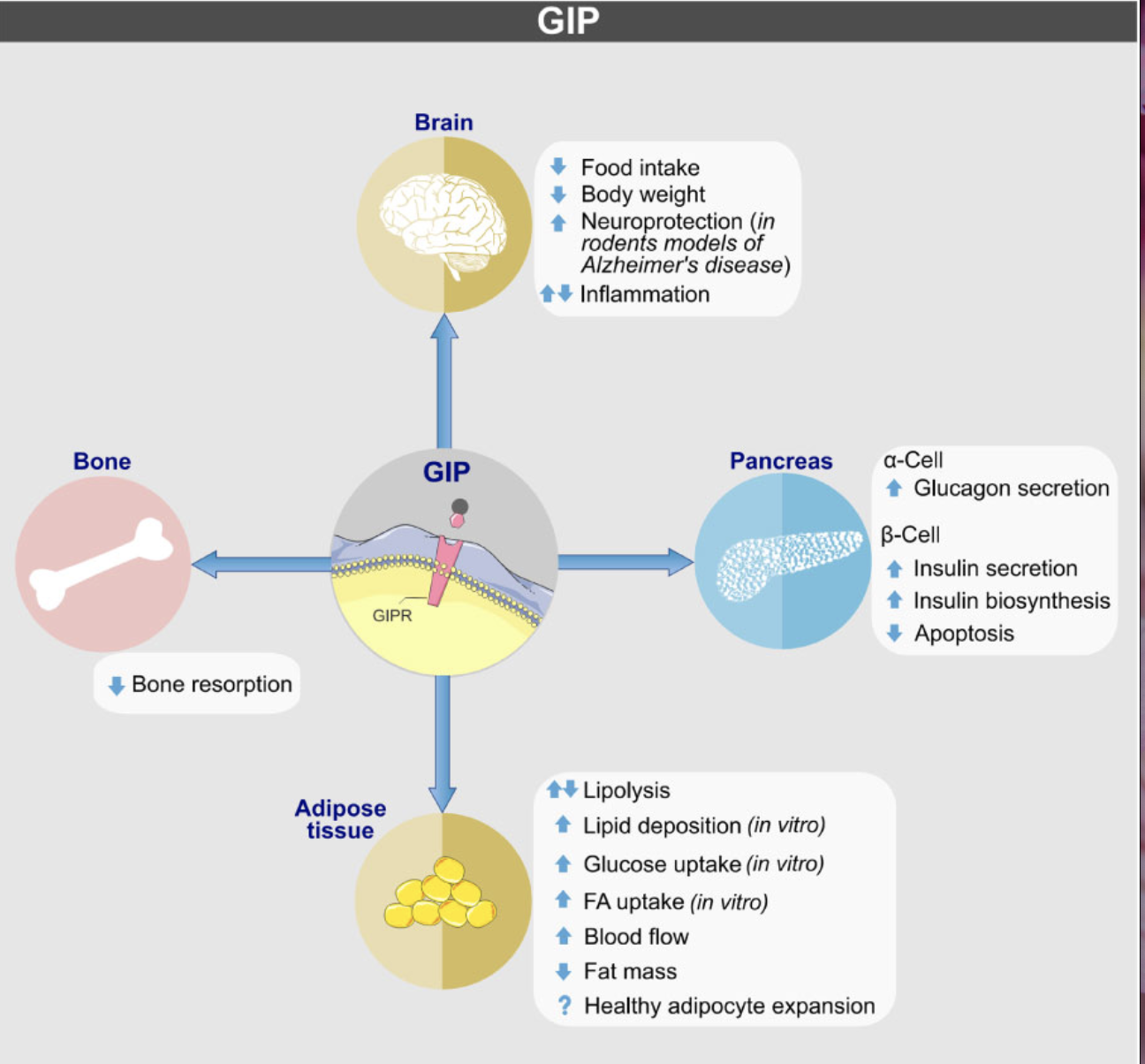The GLP-1 Agonists and Obesity: How Diabetes Drugs are Changing Non-Diabetic Lives
Steph’s Note: Are you trying to figure out what all the hub bub is about the dazzling new weight-loss drugs? What’s this Ozempic that’s literally filling up your inboxes with miracle stories and celebrity endorsements? Well guess what, tl;dr is here to give you the rundown on what you need to know to join in on that super nerdy pharmacy conversation happening at the bar after work (c’mon, you know you all do it).
Here to teach us once more is Carley Moses, who I really REALLY hope you remember from her previous posts on chronic care management and adult vaccinations. If you don’t, you need to take a detour! But come back. Don’t forget to come back. No one wants that kind of regret in their life. Anyways, teach us, Carley!
Oh, one more thing… we’re going to break the pharmacy etiquette rules and use brand names throughout this post. We’re not going rogue, we promise. We’re doing it because different brand names of the same generic medication have been approved for different indications, so we don’t want to cause confusion! We want to be accurate when we’re talking about which medication is approved for what. So please don’t nail us to the wall on this one…it’s necessary for clarity.
Hello again, my pharmacy stars! Are you ready for a blockbuster discussion about semaglutide (Ozempic/Wegovy), the Hollywood sensation taking the world of obesity management by storm? With A-listers like Chelsea Handler and Elon Musk giving it the red-carpet treatment, semaglutide is a headlining act you don't want to miss. So, grab your popcorn, put on your 3D glasses, and let's dive into the glitzy world of weight loss drugs!
Obesity Prevalence: The Epic Plot
(Image)
Obesity has been growing its fan base like a popular movie franchise. According to the World Health Organization (WHO), the global prevalence of obesity has nearly tripled since 1975. With roughly 42% of American adults identifying as obese, it's time to unveil the ultimate weapons against this heavyweight foe.
Risks of Obesity: The Dark Side of the Story
Behind the curtain, obesity is a villain with a twisted backstory. This antagonist brings a myriad of health risks to the table, from type 2 diabetes, heart disease, stroke, and certain types of cancer to sleep apnea, osteoarthritis, and mental health issues. With a list of associated health problems that could rival a horror movie marathon, it's time to find the superhero to save the day.
GLP-1 Receptor Agonists: The Mechanism of Action Comedy Club
Enter the heroes of our Hollywood tale: the GLP-1 receptor agonists. Imagine the world of GLP-1 receptor agonists as a bustling comedy club filled with hilarious mechanisms of action that keep our bodies laughing all the way to better health (and a smaller waistline). These molecules don't just deliver punchlines. They play a crucial role in combating obesity and type 2 diabetes. Let's take a front-row seat and enjoy the show!
Act 1: Insulin's Stand-Up Routine
First up on stage, we have the insulin secretion act. GLP-1 receptor agonists like semaglutide take the spotlight, enhancing insulin secretion in response to elevated blood sugar levels.
Get it?
When blood sugar “stands-up,” GLP-1 receptor agonists help our insulin to also “stand-up”. This comedic-glycemic relief helps lower blood sugar more effectively, leaving the audience in stitches (and better health!).
Act 2: Glucagon's Hilarious Improv
Next up, we have the unpredictable glucagon suppression skit. Improv is all about creating, right? Well, our liver loves to create some glucose when it senses glucagon. With GLP-1 receptor agonists in the mix, glucagon secretion takes a back seat, leading to a decrease in glucose production in the liver.
The result? A cascade of laughter and, most importantly, improved glycemic control.
Act 3: The Slow-Motion Gastric Emptying Mime
The laughter continues with a hilarious slow-motion gastric emptying mime act. GLP-1 receptor agonists slow down the rate at which the stomach empties its contents into the small intestine. This “invisible wall” act is not only amusing but also helps patients feel full for a longer time, reducing their portion sizes and how often they feel they need to eat or snack, ultimately leading to weight loss.
With this performance, GLP-1 receptor agonists have the audience rolling in the aisles (and shedding pounds!).
Act 4: The Grand Appetite Suppression Finale
For the grand finale, we have the uproarious appetite suppression showstopper. GLP-1 receptor agonists take center stage, tickling the brain's appetite regulation center in the hypothalamus and leaving it giggling with delight. This comedic act helps reduce hunger, making portion control and weight loss a laughing matter.
They're like the comedic Avengers of weight management, each with unique powers but working together for a common goal.
For you visual folks, here’s a summary of the GLP-1 agonists’ activities. (Image)
The SUSTAIN Trials: A Weight Loss Plot Twist
Now, picture this. Ozempic, a star GLP-1, steps onto the scene as a type 2 diabetes medication, preparing for its starring role in the SUSTAIN trials. These trials aimed to explore Ozempic’s potential for improving glycemic control, but it turns out Ozempic had a surprise up its sleeve—a hidden talent for shedding pounds!
(Image)
In the SUSTAIN-6 trial, the plot thickens as Ozempic’s weight loss prowess is revealed. Participants receiving Ozempic lost an average of 3.6 kg (7.9 lbs) for the 0.5 mg dose and 4.9 kg (10.8 lbs) for the 1 mg dose after 104 weeks. That averages out to a 5% weight loss without even utilizing the maximally tolerated dose! These results came with a p-value of <0.0001, making Ozempic’s weight loss potential statistically-significant and worthy of a standing ovation.
The Off-Label Buzz: Ozempic’s Unexpected Fan Base
Ozempic’s impressive weight loss performance in the SUSTAIN trials created a buzz, capturing the attention of healthcare providers and patients alike. Suddenly, people without diabetes started clamoring for a piece of the Ozempic action.
But wait, there was a twist!
Ozempic was (and still is) not FDA-approved for weight loss in patients without diabetes.
This plot twist led to the off-label prescribing of Ozempic to people seeking weight loss benefits without having diabetes. While it's essential to recognize that the FDA does not endorse off-label use, the demand for Ozempic’s weight loss magic couldn't be ignored, leading to practitioners across the country taking the obesity fight into their own hands…or prescription pads.
The Ozempic Dosage Dance: A Step-by-Step Guide
Ozempic is smoother than sweetie’s mustard, for sure. (Image)
When it comes to Ozempic dosing, think of it as a perfectly choreographed dance routine that starts slow and steady, then builds up to a dazzling finale. Just like a well-rehearsed dance number, each step in Ozempic’s dosing is crucial to ensure patients achieve optimal results - without stepping on any toes.
Step 1: The Warm-up
Begin with a warm-up dose of 0.25 mg once a week for the first four weeks. This initial dosing period is like a gentle sway, allowing the patient's body to get accustomed to the rhythm of Ozempic before diving into the more complex moves.
Step 2: The Tempo Change
After four weeks, it's time to switch up the tempo and increase the dose to 0.5 mg once a week. This is the maintenance dose for most patients, providing a smooth groove as they work towards their weight loss and glycemic control goals.
Step 3: The Showstopper (Optional)
For some patients, a grand finale may be in order. If necessary, the dose can be further increased to 1 mg once a week after a minimum of four weeks on the 0.5 mg dose. This show-stopping move should only be performed if the patient requires additional weight loss or glycemic control and has tolerated the previous dosing steps without any missteps.
Like any good dance choreographer, we can’t forget technique. It's essential to educate patients on the proper dosing and administration techniques for Ozempic, including injection site rotation, proper needle disposal, and storage requirements.
A New Star is Born: Wegovy
Ozempic isn't the only star in the GLP-1 weight management universe. As the curtains closed on Ozempic's unexpected weight loss plot twist, the stage was set for a new star to rise: Wegovy (also semaglutide). Recognizing the potential of semaglutide for weight management, researchers developed Wegovy, a higher-dose version of semaglutide approved in 2021 explicitly for chronic weight management in patients with obesity or overweight with at least one weight-related comorbidity.
So, while Ozempic may (STILL) not have received the FDA's seal of approval for weight loss in non-diabetic patients, its hidden talent paved the way for Wegovy to step into the spotlight and take on a leading role in weight management.
The Saxenda Spin-Off: Another Weight Management Star
While Ozempic and Wegovy have garnered much attention, let's not forget another GLP-1 receptor agonist family member that's been turning heads in the weight management world for years now: Saxenda (liraglutide).
(Yes, liraglutide is also known as Victoza, but that’s the formulation approved for diabetes management rather than weight loss… Very much like the Ozempic and Wegovy story.)
Saxenda, like a successful spin-off of a popular TV series, has been making waves since its FDA approval in 2014 for chronic weight management in adults with obesity or overweight and at least one weight-related comorbidity. With its once-daily dosing and proven track record, Saxenda has been charming audiences and helping them reach their weight loss goals as well.
Even though it’s one of the older members of the family, Saxenda's role in the GLP-1 receptor agonist family is not to be underestimated, as it offers an alternative for patients who may not be suitable candidates for Ozempic or Wegovy. Its once-daily dosing, compared to Ozempic and Wegovy’s once-weekly dosing, provides flexibility in titration for prescribers and increased adherence for patients who may not be able to keep track of what day of the week they inject. Saxenda's unique characteristics and star power make it a valuable member of the weight management ensemble.
Introducing Mounjaro: The Next Hollywood Sensation in Weight Loss
Picture this: a red carpet event in the glamorous world of weight loss medications, and a new starlet is ready to take center stage—Mounjaro (tirzepatide)! This up-and-coming molecule is already making headlines with its unique blend of action and weight management potential, dazzling audiences and critics alike.
Unlike the well-known GLP-1 receptor agonists we’ve been talking about, who've been the leading weight loss stars for years, Mounjaro is set to steal the limelight with its dual action. This innovative molecule not only captivates the GLP-1 receptors but also charms the GIP (Glucose-dependent Insulinotropic Polypeptide) receptors, creating a weight loss power couple that leaves the audience mesmerized.
So, what's the deal with GIP, you might ask? GIP is an incretin hormone, just like GLP-1, that helps regulate blood sugar levels. While GLP-1 has been the heartthrob in the diabetes and weight loss world for years, GIP's potential has remained mainly in the shadows. Mounjaro's grand entrance combines the best of both worlds, promising an even more effective performance in managing weight and blood sugar than its predecessors.
A quick summary of GIP and the effects of agonism on its receptors. (Image)
How do we know that Mounjaro offers such promise?
In the 2022 SURMOUNT-1 study published in NEJM, three doses of tirzepatide were compared with placebo (1:1:1:1) to determine effects on percent weight change over the course of 72 weeks. In the over 2500 participants, who were assigned to the 5, 10, and 15 mg doses of tirzepatide and placebo, the percent weight changes were both statistically and clinically significant compared with placebo. The 15 mg dose of tirzepatide produced a mean percent change in weight of almost 21% by week 72, which, when you’re talking about a mean baseline body weight of 105.6 kg in that group, is a LOT of kgs dropped!
To do the math for you, that’s about a fifth of their body weight = ~ 22 kg = almost 49 lbs! That’s life-changing.
In case you’re wondering, the price of safety was rather reasonable. The most commonly reported adverse event across all groups was GI distress (nausea, constipation, abdominal pain, diarrhea). These symptoms occurred largely during the dose-escalation period, were transient and mild/moderate in severity, and led to drug discontinuation in up to 7% of participants in each active therapy group. Otherwise, serious adverse events were reported in ~6% of participants and were evenly distributed across tirzepatide and placebo groups.
Which brings us to our next chat…
Side Effects of GLP-1 Agonists: The Plot Twists
As with any weight loss medication, GLP-1 receptor agonists like Ozempic, Wegovy, Saxenda, and Mounjaro come with potential side effects. But fear not, because just like any star in Hollywood, there are ways to manage these side effects and keep the show going.
Nausea: One of the most common side effects of GLP-1 receptor agonists is nausea. It's like the critic that's always throwing tomatoes at a performer, but there are ways to make them stop. Patients can try taking their medication with food or starting with a lower dose and gradually increasing it at the discretion of their prescriber. Some patients may also find relief with over-the-counter antacids or prescription medications like ondansetron.
Vomiting: While less common than nausea, vomiting can also occur with GLP-1 receptor agonists. This is like the unexpected plot twist that can catch us off-guard. Still, patients can manage it by staying well-hydrated, avoiding large meals, and using medications like the ondansetron mentioned above.
Diarrhea: This side effect is like a sudden rainstorm that can dampen any Hollywood premiere, but patients can manage it by staying hydrated and eating a balanced diet that's high in fiber.
Constipation: Looks like our Hollywood show can be a show-stopper…literally. Due to the slowing of the gastrointestinal tract caused by GLP-1 receptor agonists, some patients may experience stomach pains or constipation. This can be managed similarly to diarrhea by staying hydrated and eating a balanced diet that’s high in fiber.
Pancreatitis: While rare, pancreatitis is a potential side effect of GLP-1 receptor agonists. Patients can reduce their risk by avoiding excessive alcohol consumption and speaking with their healthcare provider if they experience persistent abdominal pain.
Contraindications to GLP-1 Agonists: The No-Go Zones
As with any blockbuster medication, there are some contraindications to be aware of when dispensing GLP-1 receptor agonists. Patients with a history of medullary thyroid carcinoma (MTC) or multiple endocrine neoplasia syndrome type 2 (MEN 2) should avoid these medications due to the potential risk of thyroid C-cell tumors. These have mostly been observed in rodents, which are known to have more C-cells than humans…but it also has been reported in humans with liraglutide.
Additionally, caution should be exercised in patients with a history of pancreatitis, gastroparesis, or hypersensitivity to any of the GLP-1 receptor agonist components. Although rates of acute pancreatitis have been low and similar between GLP-1 agonists and placebo in studies, caution is still warranted since acute pancreatitis carries a risk of recurrence…which can turn into chronic pancreatitis…which can increase risk of pancreatic cancer.
Ouch. No bueno.
The thought is that the GLP-1 agonists’ mechanism of action can lead to pancreatic cell hyperplasia (since the GLP-1 receptors are in the islet beta cells and exocrine duct cells), leading to a back up in pressure…and you got it, inflammation. Aka pancreatitis. So a thorough patient history is essential, especially since obesity is a risk factor in and of itself for pancreatitis.
The Production Budget: Cost of Ozempic Therapy
Ozempic's blockbuster status comes with a hefty price tag - and our other GLP-1 options aren’t too cheap either. Akin to a night at the Oscars, without insurance, the medication can cost around $1,000 per month; however, fear not!
Many insurance plans and prescription assistance programs can help cover the cost. Encourage patients to reach out to their insurance providers to see if weight management medications are covered under their plan and, if so, which medication the plan will pay for. Some insurance companies may require prior authorization proving medical necessity prior to paying for treatment. In this case, it’s up to us, the celebrity pharmacists, to communicate with prescribers to obtain the necessary documentation to keep the show going!
Patients can also explore options like copay cards and patient assistance programs to make the treatment more affordable. Some copay cards and patient assistance programs work even if the patient’s primary insurance doesn’t cover the drug!
Adjunctive Diet and Lifestyle Changes: The Perfect Script
No Hollywood blockbuster is complete without a well-crafted script, and the same applies to a successful weight management journey. While Ozempic and other GLP-1 receptor agonists can help patients lose weight, they work best in conjunction with healthy lifestyle changes. Encourage patients to:
Monitor portion sizes: Smaller portions can make a big difference in calorie intake.
Eat a balanced diet: Encourage whole grains, lean proteins, fruits, vegetables, and healthy fats.
Get moving: Recommend at least 150 minutes of moderate-intensity aerobic activity or 75 minutes of vigorous-intensity aerobic activity per week, along with muscle-strengthening activities on two or more days per week.
Set realistic goals: Help patients set achievable weight loss and fitness goals that they can maintain in the long run.
Seek support: Encourage patients to connect with support groups, friends, or family members who can help them stay motivated and accountable.
With the proper screenplay, their weight loss journey could be worthy of a Best Picture nomination!
In Summary: The tl;dr Grand Finale
Ozempic, along with Wegovy, Saxenda, and Mounjaro, has taken the stage as a powerful force in the battle against obesity. With the support of pop culture icons like Chelsea Handler and Elon Musk, and a Hollywood-themed spotlight on these GLP-1 receptor agonists, the fight against obesity has never been more in the public eye. Besides, if it’s good enough for the queen of comedy and the Tesla-driving martian man, it’s got to be worth talking about, right?
So, as the curtains close on this Hollywood-themed adventure, remember that you, the pharmacist, play a crucial role in the fight against obesity. By providing invaluable support, guidance, and education, you can help patients rewrite their scripts and achieve a happy, healthy ending. Now, that's a blockbuster worth celebrating!
That’s all for now, folks! But don’t worry, it’s just the beginning of this anti-obesity story rather than the end. (Image)







